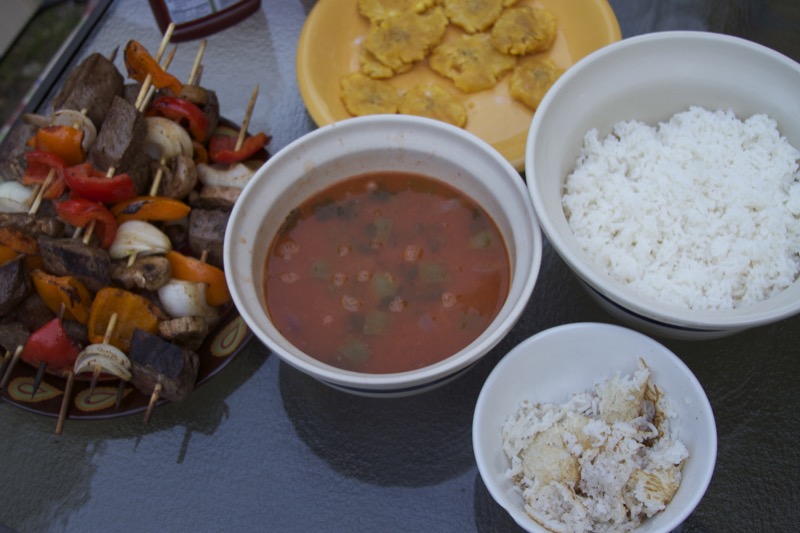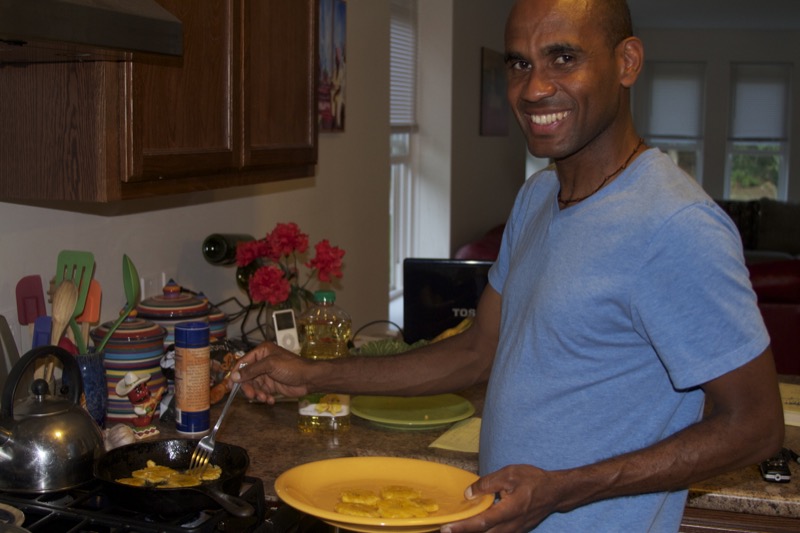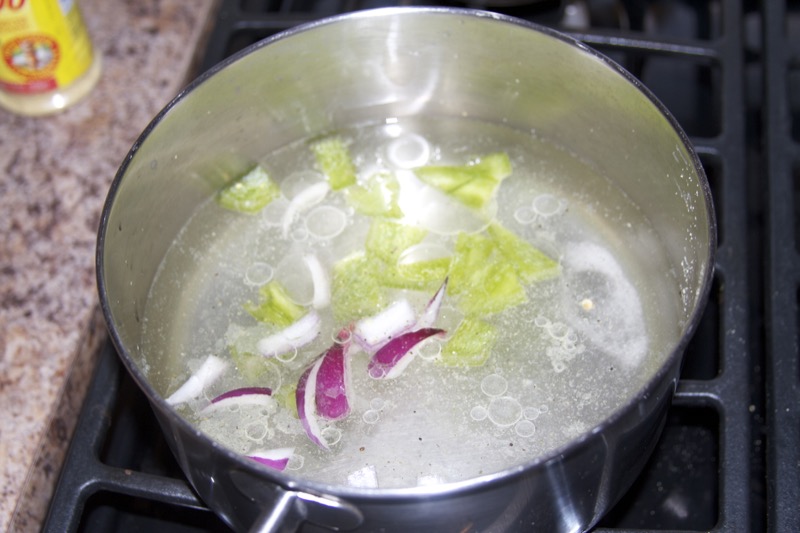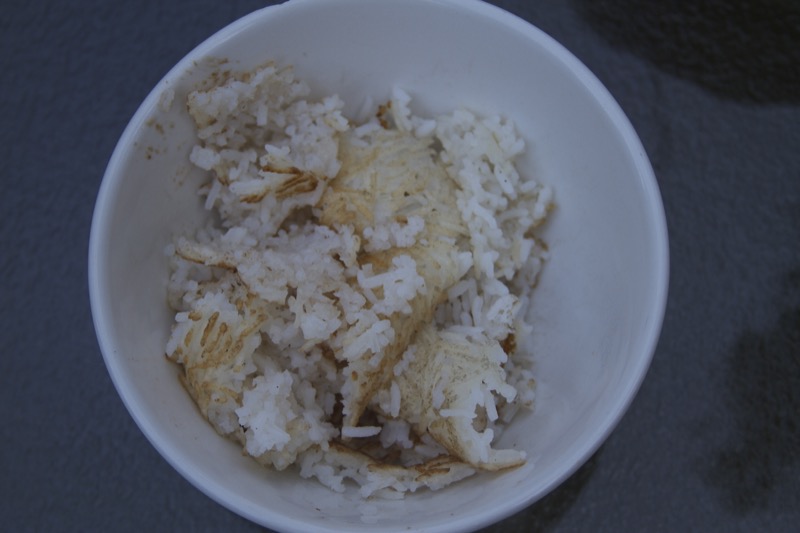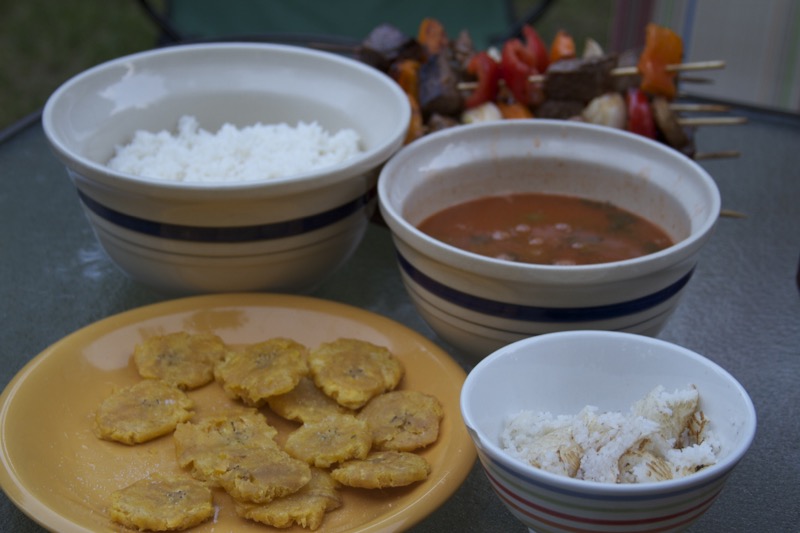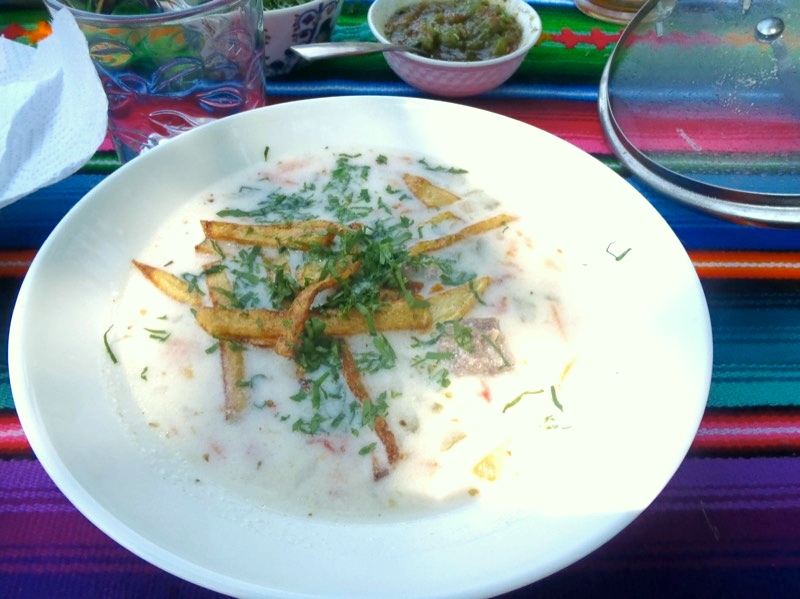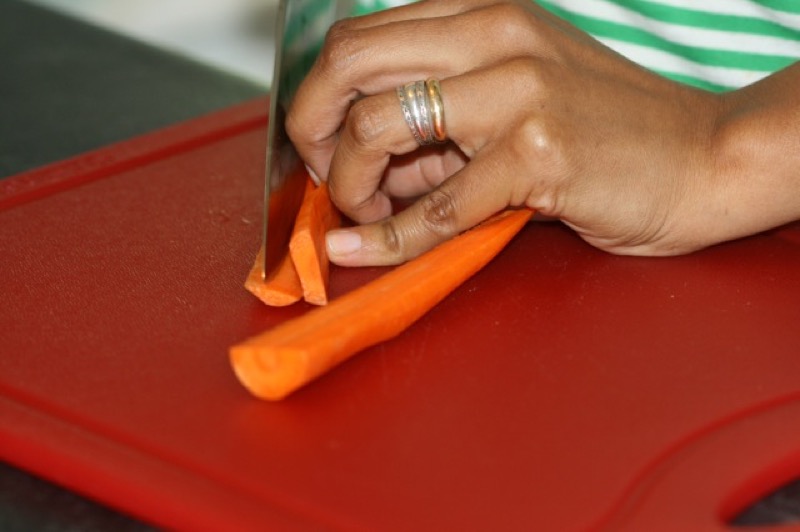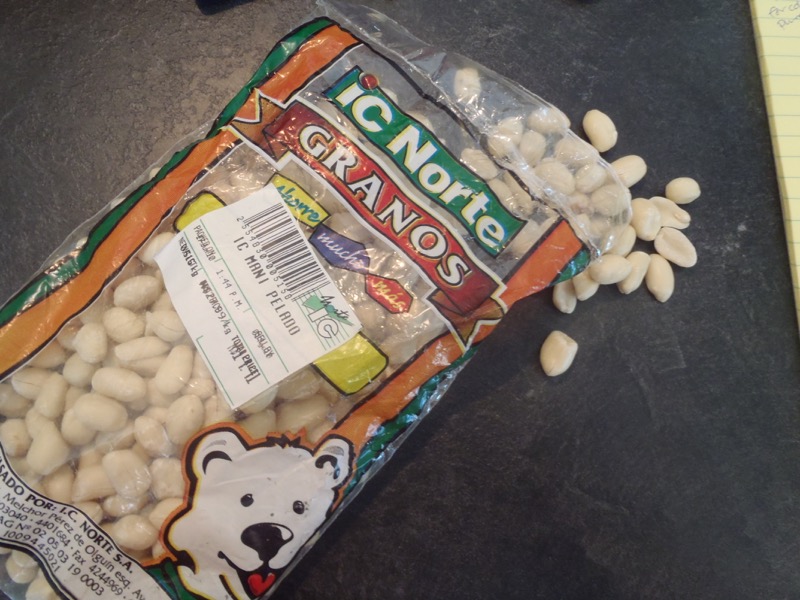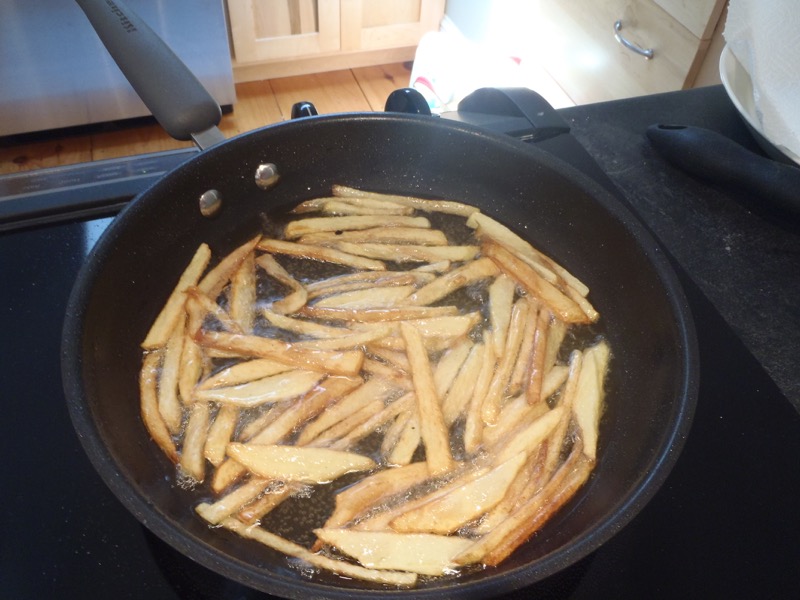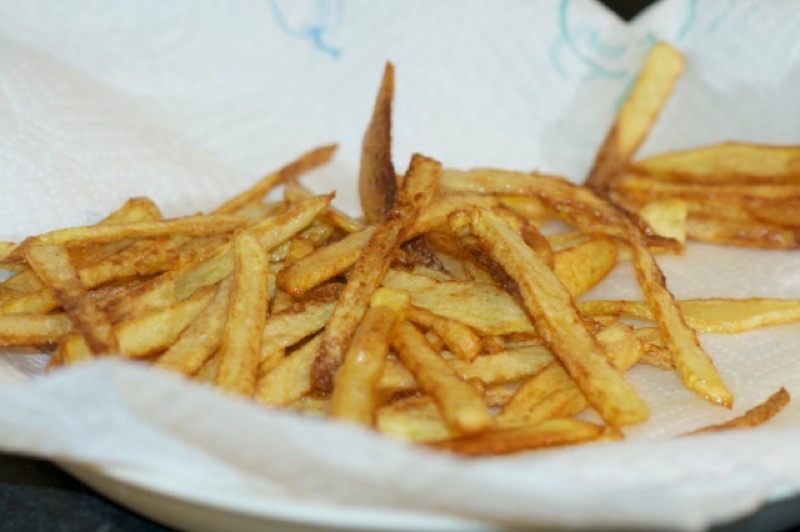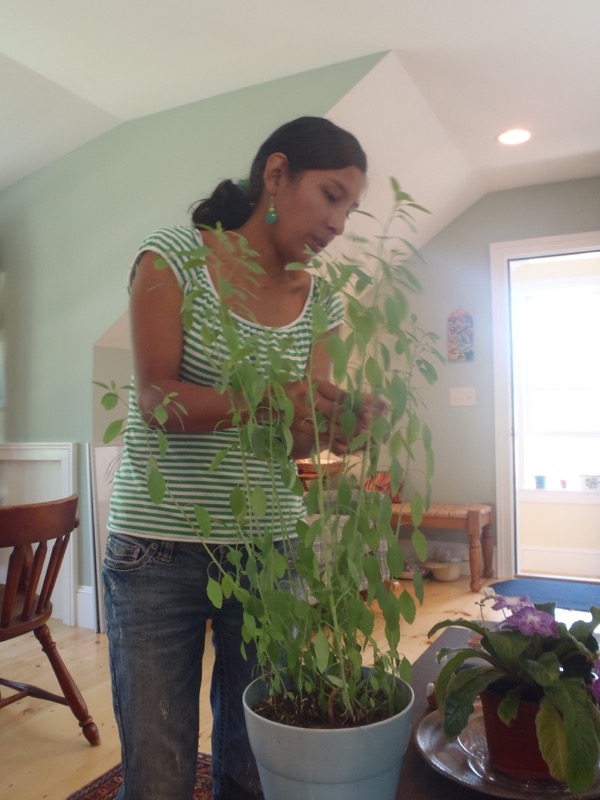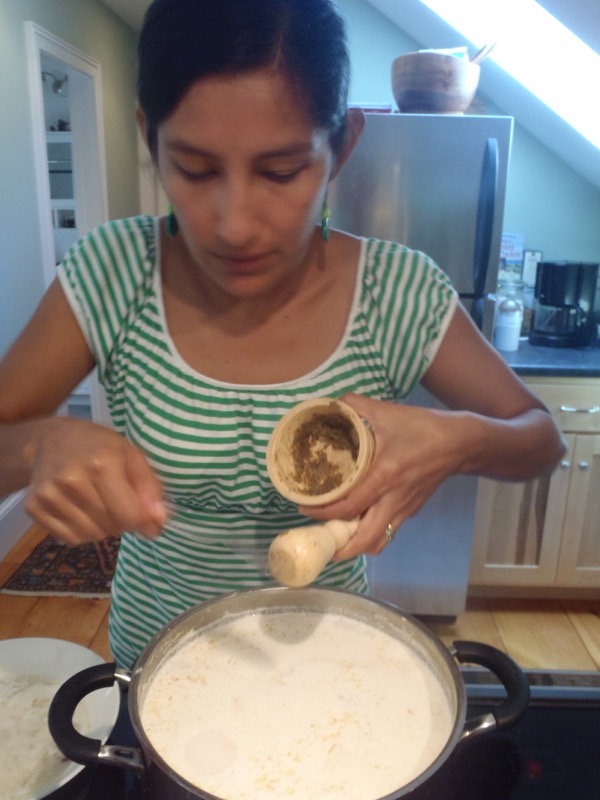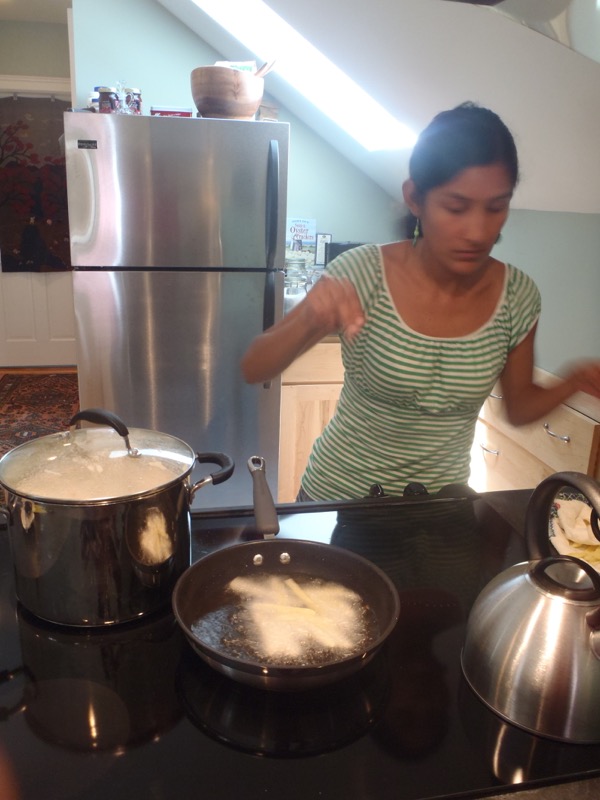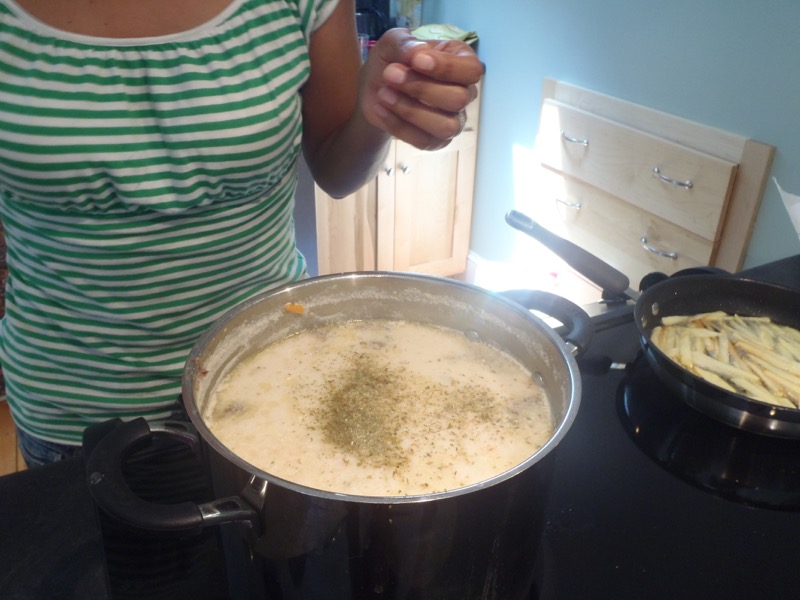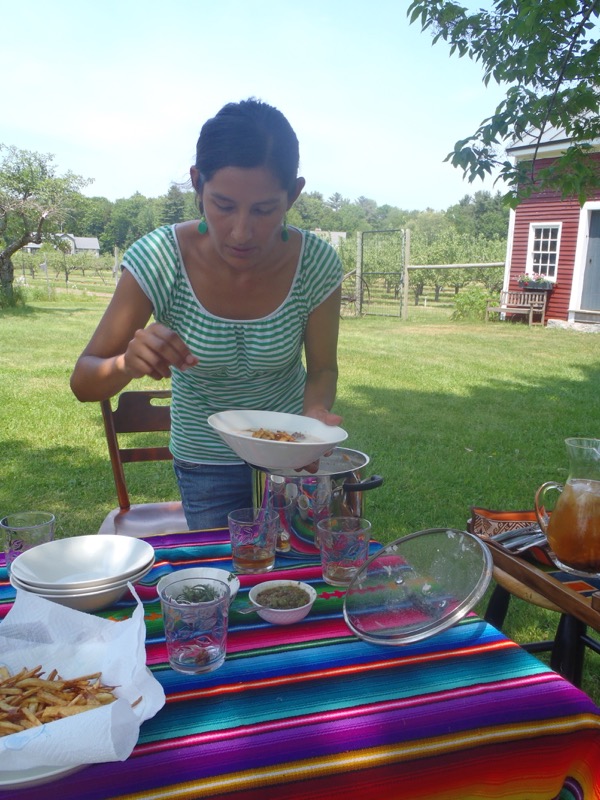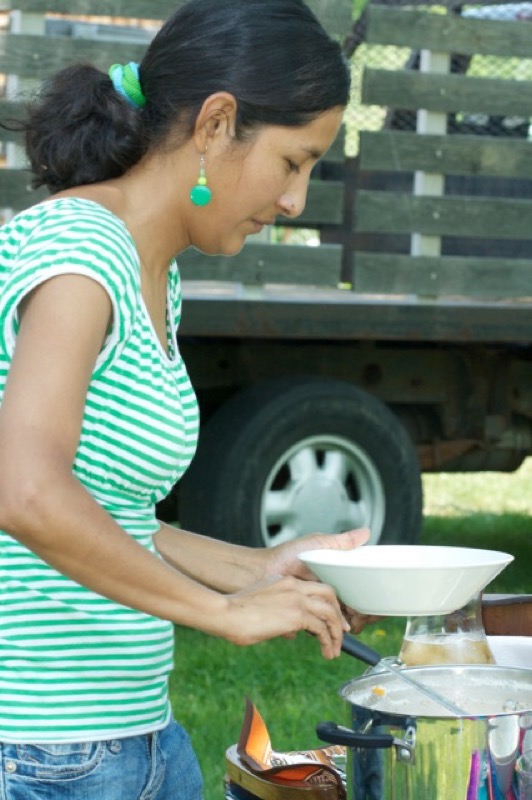As E., from a village near Uspantan, Guatemala, taught Lindsay Sterling in Freeport, Maine. Photo by Lindsay Sterling.
Note: My Guatemalan friends ate this soup with thick, fresh homemade tortillas and a spicy tomato mash.
Makes: 8-10
Cooking time: 1-2 hours
Ingredients
- 1 large whole free range chicken, cut into 2-3inch, bone-in pieces
- enough water to cover the chicken by 3-4 inches
- 3 Tbsp salt
- 6 medium potatoes, peeled and quartered
- 2 chayote squash, peeled and quartered
- 2 tomatoes, quartered + 2 whole tomatoes
- 1 lb. carrots, peeled, quartered lengthwise and cut into 3" segments
- 4 culantro leaves (he called it samate) or small handful cilantro leaves, rough chopped
- small bunch of fresh mint, leaves picked and roughly chopped
- small bunch of fresh parsley, leaves picked and roughly chopped
- 2 Tbsp chicken bouillon + 1 Tbsp as desired
- 2 fresh hot chili peppers of your choice
- 1 lime
- 16-20 thick, handmade tortillas (substitute corn bread or bread)
Instructions
1. If you are handmaking the tortillas, start by making the dough first. Once it's resting, then get the soup started.
2. In a large pot cover the chicken pieces with water by 3-4 inches, add salt, 2 Tbsp chicken bouillon and boil until chicken is cooked (opaque throughout). While that's cooking, if you are making your tortillas from scratch, this would be a good time to make them.
3. Once the chicken is cooked, then add potatoes, squash, carrots, and the 2 quartered tomatoes to the soup pot.
4. While those are cooking, in a separate pot boil the two whole tomatoes and 2 whole fresh chili peppers until the chili peppers are soft. Peel skin off tomatoes and roughly chop chili peppers and then mash the tomatoes and peppers together in a mortal and pestle.
5. When vegetables in the soup are tender, add all the chopped herbs (culantro/cilantro, mint, and parsley). Taste. If you think it needs it, add 1 Tbsp bouillon to enhance flavor. Serve bowls of soup with a basket of warm, thick tortillas, a bowl of lime wedges, and a bowl of the chili-tomato mash for guests to add to add spice their soup as desired.



























































